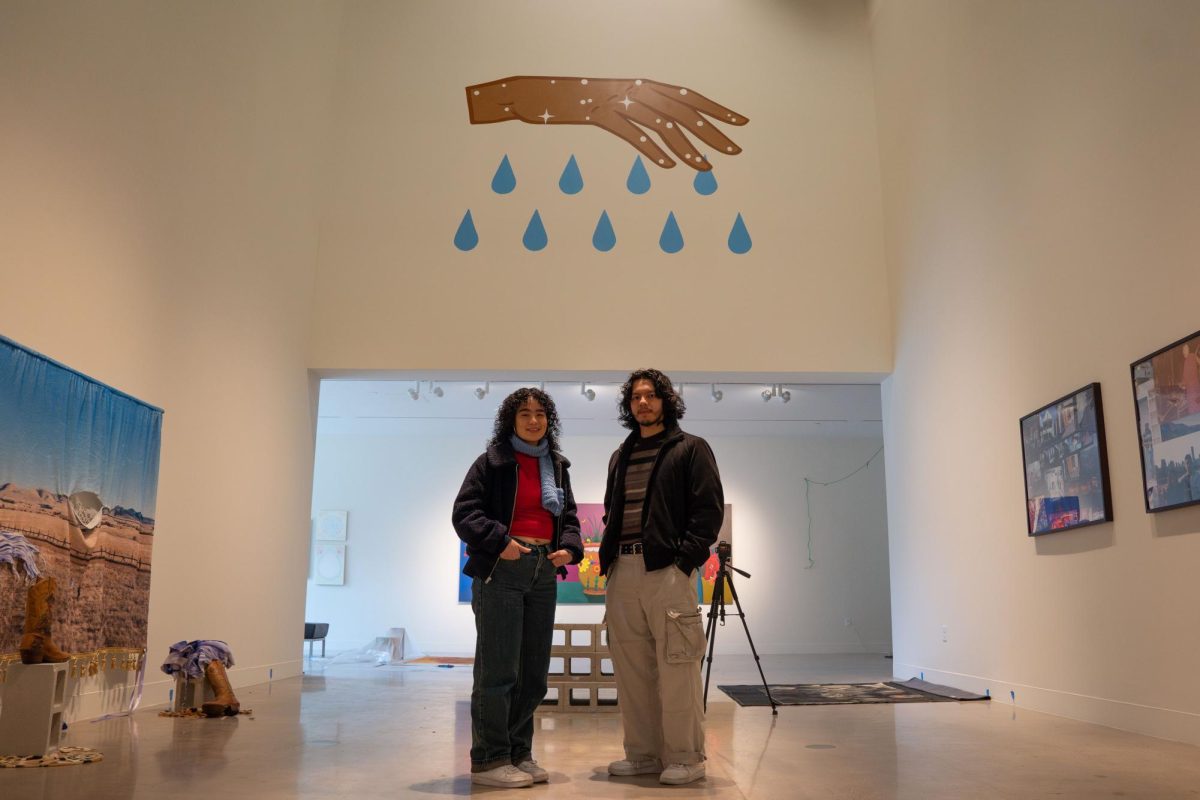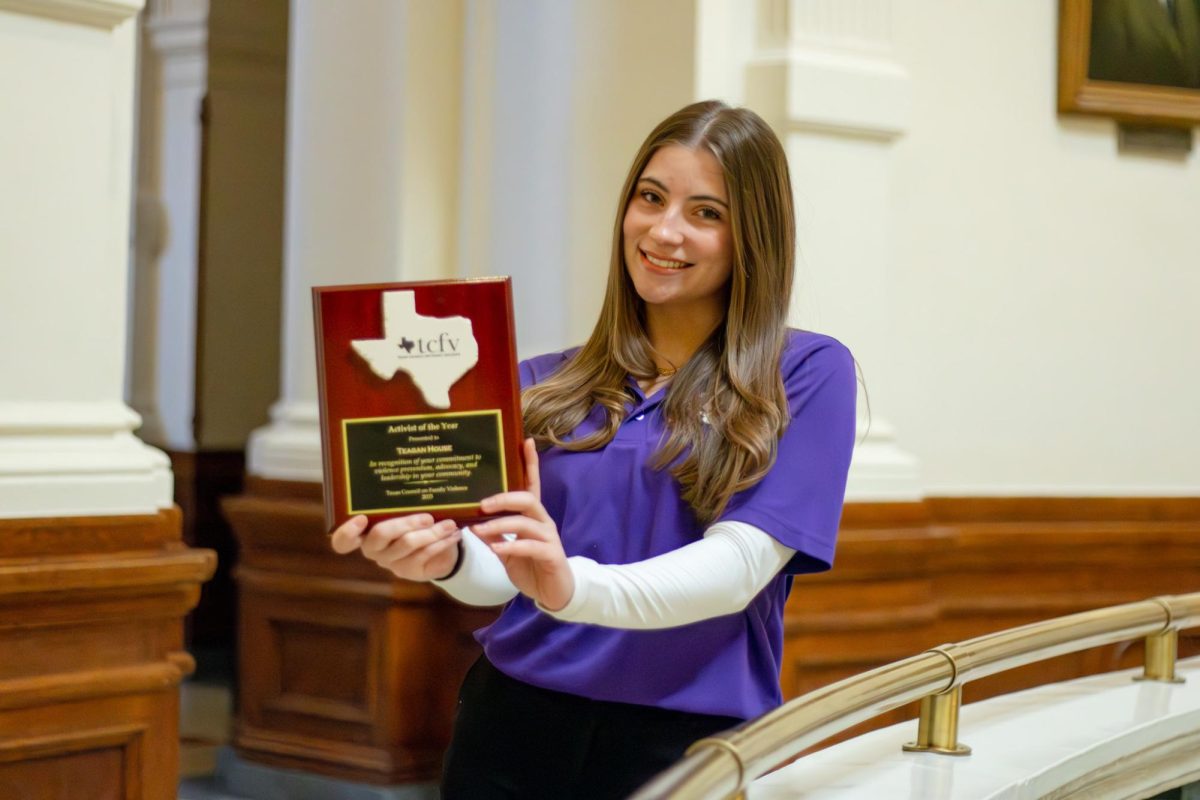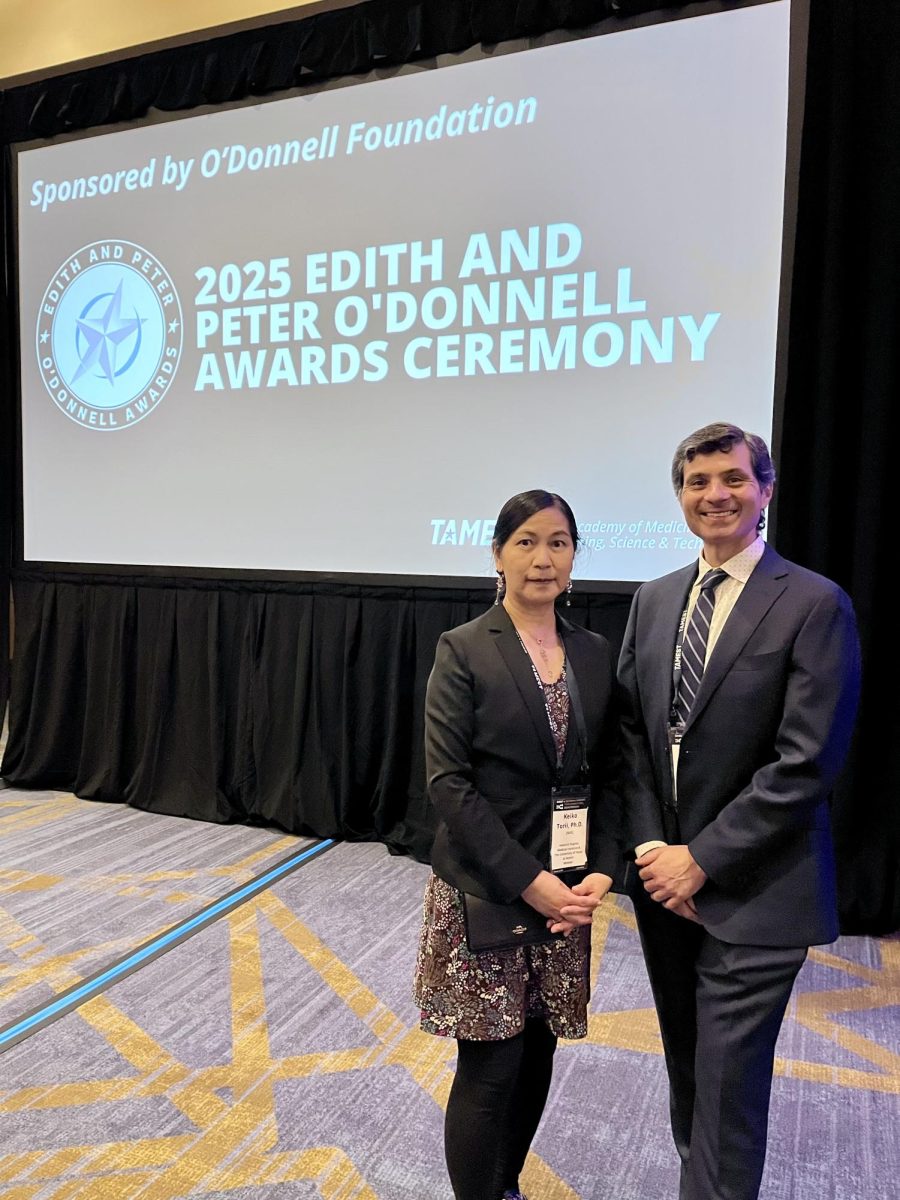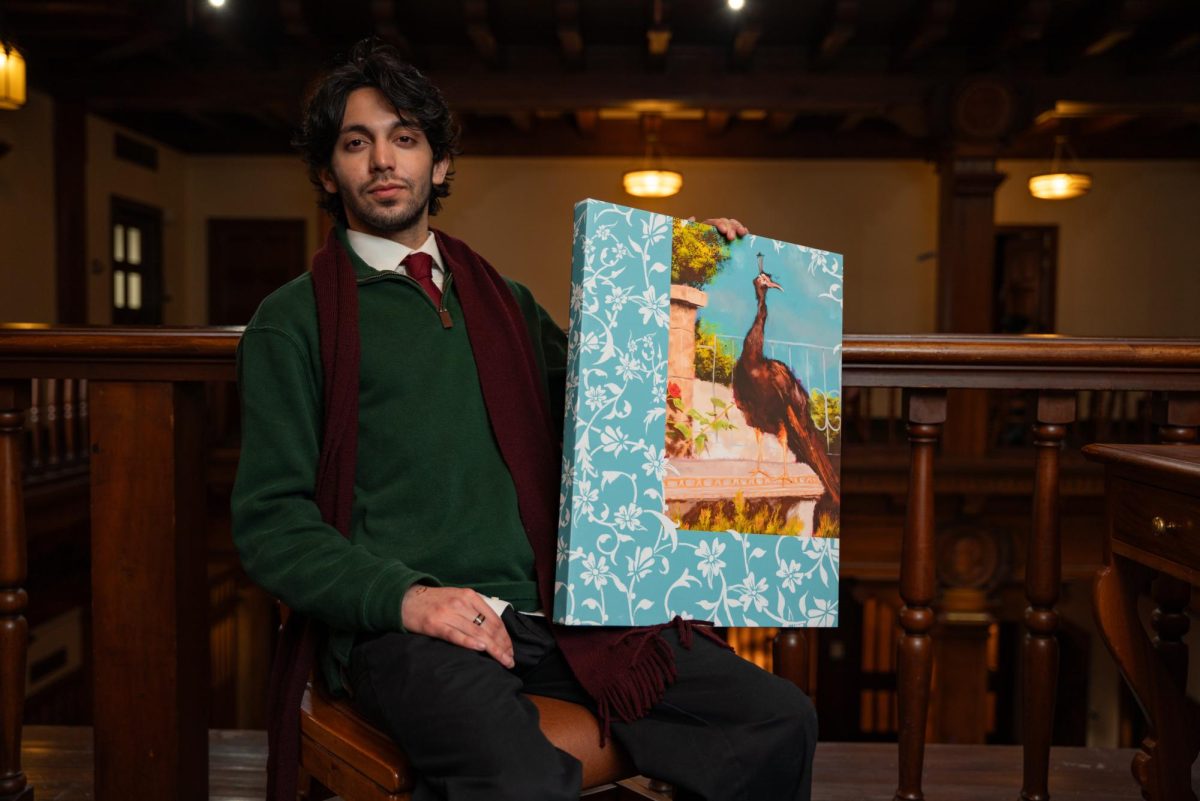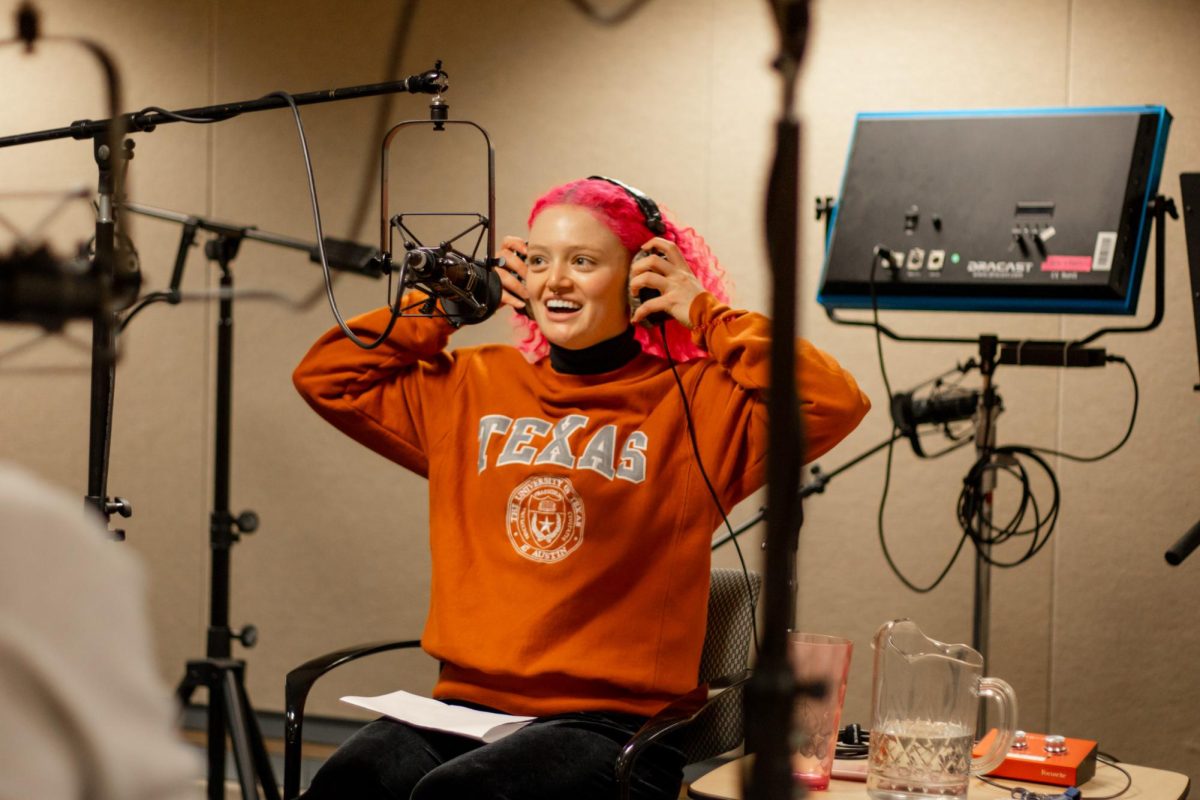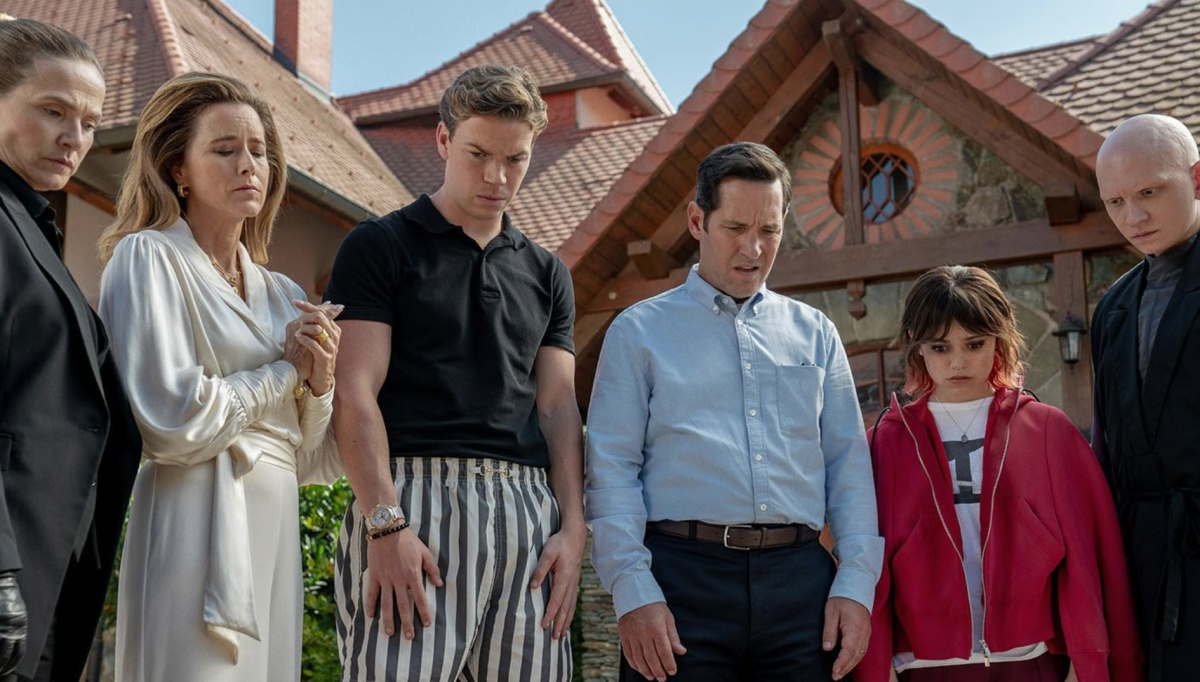Two sandstone-colored cowboy boots rest against a short stack of cinderblocks, one stamped with a snarling wildcat, the other a U.S. Homeland Security document impression. A strip of leopard print and a dismembered purple unicorn interrupt the large backdrop of desert sky and sand. Bella Varela’s piece, “Purple Unicorn,” evocates themes of the borderland landscape, adding a rich layer to the “Somos Recuerdos” exhibit.
The student-led collaborative exhibit “Somos Recuerdos,” meaning “we are memories,” compiles pieces created by students, professors and local Latinx artists exploring facets of their identities, familial experiences, intersectionality, immigration and assimilation. Studio art seniors Alan Aguilera, Julio Martinez and Fabiana Muñoz-Olmo curated the exhibit opening on Friday in the Visual Arts Center.
“We (looked) at who in the art department’s (projects) may relate to each other,” Martinez said. “We were focusing on the idea of memories, memory in reference to the past.”
Martinez and Muñoz-Olmo submitted their proposal for the exhibit to the Center Space Project, a collective that bridges communications between student artists and the University’s Visual Arts Center. Morgan Boudousquie, former president of the CSP, said the exhibit spotlights student artists’ efforts for local galleries.
“(Students) have a very contemporary outlook on what’s going on in the world, and it’s very important for not just the student body to see it but the community in Austin,” Boudousquie said.
Instead of including short blocks of text listing information about the artists and potential interpretations next to the pieces, Martinez said he wrote existential poetry on the labels to refute the formality of typical labels.
“I thought about what I want people to consider when they walk through the space,” Martinez said. “What do I embody, and who do I embody? … What is the history of the place where I’m living? … What shapes me?”
Muñoz-Olmo said she crocheted piñatas as her submission, drawing upon their influence from Indigenous, Chinese, Latinx and Christian history.
“Piñatas are really interesting because they’re from everywhere,” Muñoz-Olmo said. “I love the colors, and (the history) is just so rich.”
Muñoz-Olmo said she hopes exhibits that focus on Latinx identities increase the representation of more artists from outside of the United States in art spaces and collections.
“The Latinx community is growing really fast,” Muñoz-Olmo said. “There’s a lot of young people, and we’re not represented in academia and art galleries … Whenever I came (to UT) … I was floored by how big the community is and how misrepresented we can be, even at UT.”
In spite of recent state legislation banning diversity, equity and inclusion offices at public universities, Martinez said media and art portraying Indigenous and Latinx people can reverse stereotypes and add complexity to people’s understanding.
“I don’t know if (exhibits) can get around the laws, but definitely they can change people’s mindset or how we see the world,” Martinez said. “(They) can open people’s eyes that there’s more things out here.”

